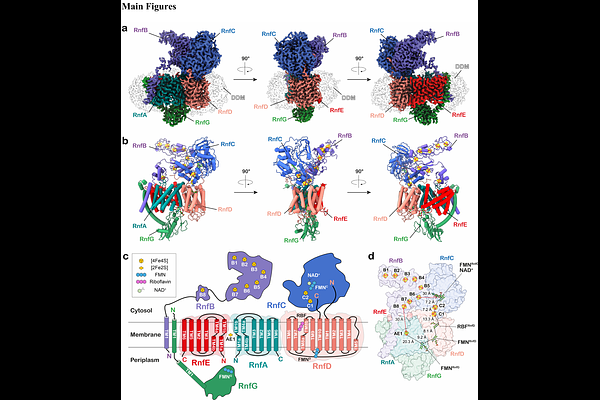Molecular principles of redox-coupled sodium pumping of the ancient Rnf machinery

Molecular principles of redox-coupled sodium pumping of the ancient Rnf machinery
Kumar, A.; Roth, J.; Kim, H.; Saura, P.; Bohn, S.; Reif-Trauttmansdorff, T.; Schubert, A.; Kaila, V. R. I.; Schuller, J.; Mueller, V.
AbstractThe Rnf complex is the primary respiratory enzyme of several anaerobic prokaryotes that transfers electrons from ferredoxin to NAD+ and pumps sodium ions (Na+) across a membrane, powering ATP synthesis. Rnf is widespread in primordial organisms and the evolutionary predecessor of the Na+-pumping NADH-quinone oxidoreductase (Nqr)1. By running in reverse, Rnf reduces ferredoxin with NADH as reductant at the expense of the transmembrane electrochemical ion gradient and provides low potential electrons for nitrogenases as well as CO2 reductases. Yet, the molecular principles that couple the long-range electron transfer to the Na+ translocation across the membrane remain elusive. Here we resolve key functional states along the electron transfer pathway using redox-controlled cryo-electron microscopy (cryo-EM) that, in combination with biochemical functional assays and atomistic molecular simulations, provide key insight into the redox-driven Na+ pumping mechanism. We show that the reduction of the unique membrane-embedded [2Fe2S] cluster in the vestibule between the RnfA/E subunits electrostatically attracts the sodium ions, and in turn, triggers an inward/outward transition with alternating membrane access driving the Na+ pump and the reduction of NAD+. Our study unveils an ancient mechanism for redox-driven ion pumping, and provides key understanding of the fundamental principles governing energy conversion in biological systems.